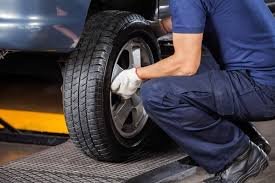1. Why Tire Repair Costs Vary Widely
Tire repair pricing is not one-size-fits-all. Here’s what shapes the variation:
| Cost Factor | Influence on Price | Notes / Example |
|---|---|---|
| Severity & location of damage | Major effect | Punctures in the central tread area are cheaper to fix than damage near the shoulder or sidewall |
| Type of repair (plug only vs patch, or patch + plug) | Big effect | Patches (from inside) take more work; some shops do “plug+patch” combos |
| Labor and shop overhead | Significant | Urban, high-cost areas or brand-name shops charge more per hour |
| Tire type & size | Moderate | High-performance, run-flat, or oversized tires can increase labor complexity |
| Mounting, dismounting, balancing | Sometimes included or extra | Many shops include remount + balance; others charge separately |
| Regional variation / currency / taxes | Strong effect | What’s cheap in one city might be expensive in another |
| Warranty, specials or promos | Can reduce cost | Some tire retailers repair for free or discounted if the tire is under warranty |
Because of all these, published articles estimate a “typical” repair in the range whereas KBB cites $54–$64 for some markets (depending on vehicle).
In DIY or budget shops, some users report payin for patching.
2. Typical Price Ranges (with Examples)
Here is a breakdown of repair cost tiers you might see:
| Tier | Service | Approx Price Range* | Example / Notes |
|---|---|---|---|
| Basic plug or patch | Remove tire, patch hole, remount & balance | $20 – $50 | Common scenario in U.S., Canada |
| Bead or rim damage repair | Re-sealing bead, rim cleanup | $50 – $150+ | Depends on rim size, severity |
| Sidewall patch (rare / risky) | Very limited cases | Often not recommended | Many shops won’t do this safely |
| Labor-only surcharge | If labor is billed separately | $10 – $30 extra | Some shops split parts & labor |
| Premium / specialty tires | High end or performance tires | Up to $100+ for complex repair | For high-end vehicles or custom wheels |
* These are ballpark estimates; local costs may differ drastically.
3. When You Cannot or Should Not Patch
Patching is not always safe or allowed. Here are the key limitations:
- Sidewall / shoulder damage – these areas flex too much; patching is considered unsafe
- Large punctures – holes > ¼ inch (6–7 mm) typically cannot be safely patched
- Damage too close to edge of tread (within about ½ inch of shoulder)
- Multiple punctures too close together – if two holes are close (<16 inches apart)
- Tread worn beyond safe limit – if the tire is already close to its end of life
- Internal structural damage (belts, cords) – visible deformities
- Non-radial tires, unusual constructions, etc.
If any of these apply, replacement is the safer, recommended path.
4. Decision Flowchart: Patch or Replace?
Below is a decision flow you or a mechanic can use to assess the repair path
5. Step-by-Step What a Professional Patch Repair Entails
Below is a typical repair workflow. This helps you understand why labor matters.
- Remove wheel from vehicle
- Unseat the tire bead (from rim)
- Inspect interior for damage / puncture path
- Buff / clean interior surface
- Insert patch (or patch + plug combination)
- Apply adhesive / bonding
- Re-seat bead and remount the tire
- Inflate and check for leaks
- Balance the wheel (static or dynamic)
- Reinstall to vehicle
Because of all the steps, even a “simple” patch involves multiple labor steps, which is why labor can dominate cost.

6. How Much Should You Pay in Various Regions / Markets
To make this guide practical for your readers:
- U.S./Canada: $20–$50 is typical for standard cars; in some markets or premium shops, $50–$75 or more
- United Kingdom / Europe: Roughly £15–£60 depending on shop, size, and labor
- Australia / New Zealand: Similar ranges in AUD/NZD, often slightly higher due to remoteness
- Pakistan / South Asia: Local repair shops may charge significantly less (e.g. equivalent of USD 5 to $25) — but quality and safety vary
- Other regions: Always get local quotes; the overheads and labor rates cause big swings.
7. Cost Saving Tips & Best Practices
- Ask the shop to show and explain the damage before accepting
- Request itemized invoice (labor vs parts)
- Use local, independent repair shops — they often charge less than national chains
- Check if tire warranty / roadside protection covers repairs
- Avoid drive-on patches (patching while still mounted) — safer to dismount first
- Combine services (e.g. rotate tires, balance) to reduce extra labor
- Inspect tires regularly (e.g. monthly) to catch small leaks early
8. Example Case Studies (Hypothetical)
Case A: Nail in center tread, compact car, U.S. suburb
- Shop removes tire, patches, remounts & balances — cost: $25
Case B: Bead damage on SUV wheel, high-performance tire
- Rim cleanup + re-sealing + rebalance — cost: $80–$120
Case C: Small puncture but near shoulder, tire almost worn
- Shop rejects repair → recommends replacement, cost: $150 (new tire)
These help readers relate and calibrate their own quotes.
9. After the Repair: What to Monitor & When to Redo
- Check tire pressure daily for first few days
- Inspect patch area for slow leaks or bubbling
- Monitor vibration or pulling while driving
- Do not patch the same spot a second time — better to replace
- Consider retesting or replacing if patch shows signs of wear
